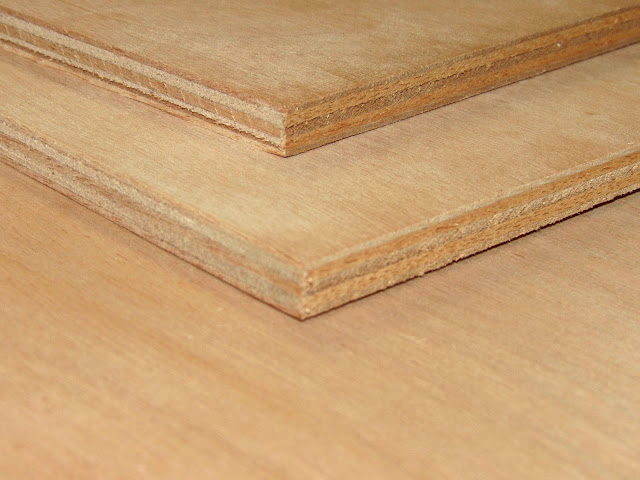The Versatility of Plywood: An Informative Guide
When it comes to versatile, cost-effective, and reliable materials in construction and woodworking, plywood stands out as a top choice. This engineered wood product has been a cornerstone in the industry for decades, known for its strength, durability, and adaptability.
Whether you're a DIY enthusiast, a professional carpenter, or involved in large-scale construction projects, understanding the benefits and applications of plywood can greatly enhance your work. In this blog, we'll explore what plywood Melbourne is, its types, advantages, and common uses.
What is Plywood?
Plywood is a type of manufactured wood panel made from thin layers or "plies" of wood veneer that are glued together. These layers are typically arranged with their grain running perpendicular to each other, which gives plywood its strength and stability.
The outermost layers are known as face veneers, while the core layers are called cross-bands. This cross-grain structure helps prevent the wood from splitting when nailed at the edges and reduces expansion and shrinkage, providing improved dimensional stability.
Types of Plywood
Plywood comes in various grades and types, each suited for different applications:
- Softwood Plywood: Made from softwood species like pine, fir, or spruce. It's commonly used in construction and industrial applications.
- Hardwood Plywood: Made from hardwood species like oak, maple, or birch. It's often used for furniture, cabinetry, and interior applications due to its attractive finish.
- Exterior Plywood: Treated to withstand moisture and weather conditions, making it suitable for outdoor use.
- Marine Plywood: High-quality plywood with waterproof adhesive, designed for use in marine environments where it will be exposed to moisture.
- Structural Plywood: Engineered for strength and stability, used in building construction for applications like flooring, roofing, and wall sheathing.
- Specialty Plywood: Includes fire-retardant plywood, moisture-resistant plywood, and flexible plywood, each designed for specific conditions and uses.
Advantages of Plywood
Plywood offers numerous plywood Melbourne benefits that make it a preferred material for various projects:
- Strength and Durability: The cross-grain structure of plywood provides high strength and stability, making it resistant to cracking, bending, and warping.
- Cost-Effective: Compared to solid wood, plywood is more affordable while still offering substantial strength and durability.
- Versatility: Plywood can be used for a wide range of applications, from structural components to decorative finishes.
- Ease of Use: Plywood is easy to cut, shape, and fasten with common woodworking tools, making it a favourite among DIY enthusiasts and professionals alike.
- Environmental Benefits: Plywood production often uses smaller, fast-growing trees, making it a more sustainable option compared to traditional solid wood.
- Large Sizes: Plywood sheets are available in large sizes, reducing the need for joints and providing a smooth, continuous surface.
Common Uses of Plywood
Plywood's versatility makes it suitable for a variety of applications across different industries:
- Construction: Plywood is widely used in construction for subflooring, roofing, wall sheathing, and formwork. Its strength and stability make it ideal for these structural applications.
- Furniture Making: Hardwood plywood is often used in furniture making due to its attractive finish and ease of working. It’s used in creating cabinets, tables, chairs, and shelving units.
- Interior Design: Plywood is popular in interior design for wall panelling, ceilings, and built-in furniture. Its aesthetic appeal and ease of finishing make it a versatile choice.
- Packaging: Plywood is used in the packaging industry to create strong and durable shipping crates and pallets.
- Marine Applications: Marine plywood is specifically designed for use in boat building and other marine applications where resistance to water is crucial.
- DIY Projects: From simple shelves to complex cabinetry, plywood is a favourite material among DIY enthusiasts due to its ease of use and versatility.
Choosing the Right Plywood
When selecting plywood for your project, consider the following factors:
- Grade: Plywood grades range from A to D, with A being the highest quality with minimal defects and D being the lowest with visible knots and imperfections. Choose the grade that best suits your project's requirements.
- Thickness: Plywood comes in various thicknesses, typically ranging from 1/8 inch to 3/4 inch. Select the appropriate thickness based on the strength and stability needed for your application.
- Type: Choose the type of plywood (softwood, hardwood, exterior, marine, etc.) that matches the specific conditions and requirements of your project.
- Finish: Consider the finish and appearance of the plywood, especially for visible surfaces in furniture and interior design projects.
Final Words
Plywood is an incredibly versatile and valuable material in construction and woodworking. Its strength, durability, and adaptability make it a go-to choice for a wide range of applications.
Whether you're building a house, crafting furniture, or working on a DIY project, understanding the different types and uses of plywood Melbourne will help you make informed decisions and achieve excellent results. Invest in high-quality plywood and enjoy the benefits of this reliable and cost-effective material in your next project.



Comments
Post a Comment